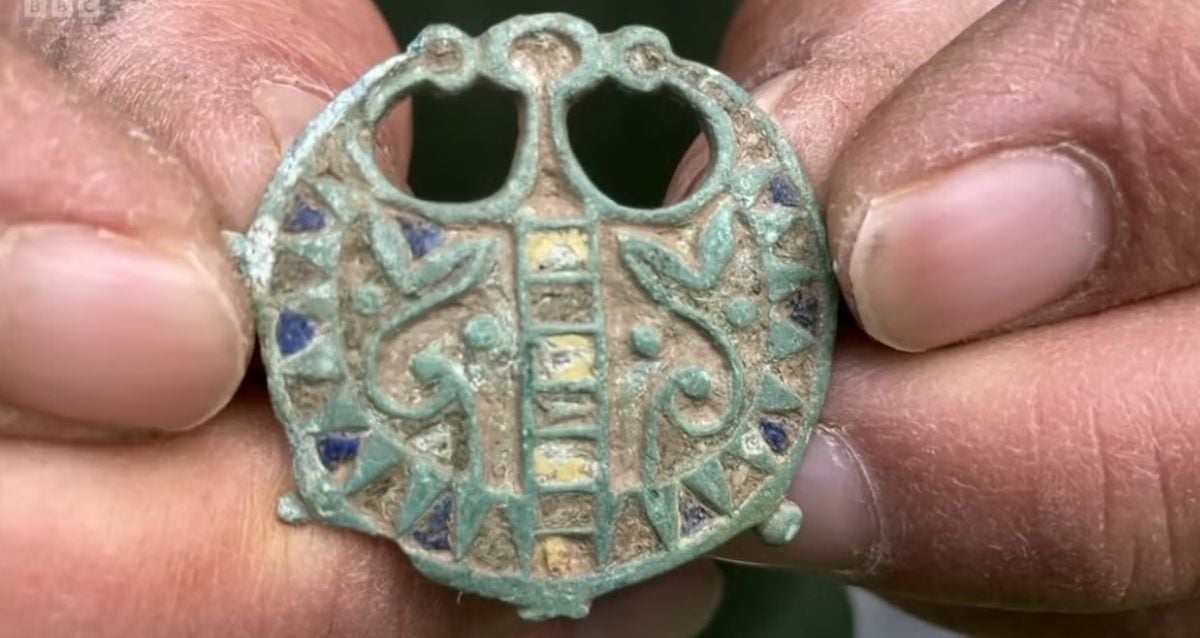Unearthed in a Canadian Thrift Store: Mysterious Middle Ages Artifacts Defy Explanation
Imagine strolling into your local thrift store, eyes roaming over dusty shelves, only to stumble upon 13 seemingly modest jewelry pieces tagged at $30 each—and then realizing they might just be ancient relics, whispering tales from centuries past. That’s exactly what happened in Chilliwack, British Columbia, when a curious donation of 11 rings and two medallions caught the eye of an archaeology buff, halting their sale and sparking an unexpected journey into the medieval era. Now, these mysterious artifacts are under the microscope at Simon Fraser University, where students are diving headfirst into the puzzle of their origin and age. But here’s the kicker—how do you handle priceless treasure when you don’t know its story, or even if it was ethically acquired? It’s a cliffhanger that blends history, mystery, and a thrift-store twist you couldn’t script better—even if you tried. Ready to unravel this bizarre treasure hunt? LEARN MORE
These 13 jewelry pieces that were on sale at Thrifty Boutique in Chilliwack, British Columbia for $30 each might be priceless relics dating back untold centuries.

Sam Smith/SFUThe items are now being studied at Simon Fraser University’s Museum of Archaeology & Ethnology.
A thrift store in British Columbia, Canada received a curious donation of 11 rings and two medallions — which might be medieval artifacts, if not even older.
The pieces were donated to Thrifty Boutique in Chilliwack in the spring of 2024, and they were soon put on sale. Then, an archaeology enthusiast who happened to visit the store alerted employees that these items could actually be historical artifacts dating back hundreds, if not thousands, of years.
Luckily, none of the rings or medallions had sold by that point. The shop then pulled them off the shelves and contacted experts at Simon Fraser University (SFU).
The pieces are now in the care of the Museum of Archaeology & Ethnology at SFU. The objects will be part of a new course where students will analyze them in an attempt to determine their age and provenance.
The Discovery Of Possible Medieval Artifacts On Sale At A Canadian Thrift Shop

Museum of Archaeology & Ethnology/SFUThe 11 rings and two medallions that were donated to the thrift shop in Chilliwack.
According to a statement from SFU, after receiving the 11 rings and two medallions, Thrifty Boutique offered them up for $30 each — until a patron with an archaeology background recommended that they contact the university.
“So, that’s what we did,” said store manager Sandy Parker, according to CBC News.
Upon first look at the items, associate professor of archaeology at SFU Sabrina Higgins estimated that they could date back to the fourth or fifth century C.E. However, more specific information about their age will hopefully come to light once the artifacts are studied as part of an upcoming class at the university in which students will have the opportunity to analyze these items.

SFUOne of the 11 rings donated to Thrifty Boutique that might date back to the Middle Ages.
“It will take at least a semester – if not longer – to piece together the origins of these artifacts,” Higgins explained. “We’re fortunate to have access to cutting-edge research technologies within our department to properly study these objects, so it promises to be a rewarding journey for students.”
The objects likely came from somewhere within the former Western Roman Empire, though Higgins believes that the items most likely date back to the medieval era, not long after the fall of Rome.
“The shapes, designs and construction make me think that these are medieval, as the Romans typically used slightly different materials and techniques,” Higgins said.
Regardless of their exact age, the fact that these artifacts came to light via a thrift store is what’s most remarkable as of now.
“For them to be found in a thrift store is, I think, on the rare side,” Higgins told CBC News.
However, the fact that they fell into experts’ hands without documentation or any definitive information at all turned this situation into something of a quandary.
Simon Fraser University’s Ethical Dilemma About Accepting Unverified Artifacts

Sam Smith/SFUThis medallion may date back to the early medieval period, though more study is needed.
Accepting these artifacts wasn’t a simple decision for SFU. The museum does not normally take in items that lack proper documentation. Without documentation verifying that the artifact was acquired ethically, the museum risks acquiring an item that was illegally looted.
Because the thrift store doesn’t know who donated the items, who previously owned them, or how that person took possession of them, the museum staff and experts had to confront a series of ethical questions before deciding to accept the artifacts.
“What if they were looted from their original archaeological site? Looting leads to the loss of cultural and scientific knowledge,” said Cara Tremain, assistant professor at SFU. “Should we have advised on bringing them in without knowing where they came from? What would have happened to them if they weren’t brought in?”



















Post Comment